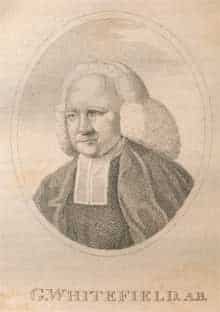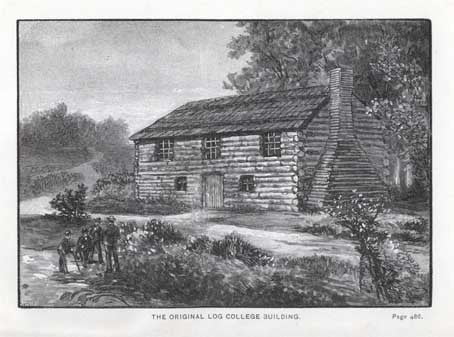First Schism in American Presbyterianism
![Rev. Gilbert Tennent [5 February 1703 – 23 July 1764]](https://thisday.pcahistory.org/wp-content/uploads/2013/02/tennentGilbert-238x300.jpg) You have already read a couple of days ago about the reunion between the Old Side and New Side Presbyterians on May 25. We will now turn to the actual schism which took place on May 27, 1741.
You have already read a couple of days ago about the reunion between the Old Side and New Side Presbyterians on May 25. We will now turn to the actual schism which took place on May 27, 1741.
One of the early students of the Log College in New Jersey was Gilbert Tennent. As a graduate of Yale, he was licensed by the Presbytery of Philadelphia in 1725 and installed as pastor of the Presbyterian Church in New Brunswick, New Jersey.
As Tennent saw other churches experiencing revival, he saw the barrenness of his own pastoral work. Afflicted with serious illness at the same time, he begged God in prayer to give him just six months more of life on this earth that he might promote God’s kingdom with all his mind. God answered his prayer, and by the Word and Spirit, revival came to his congregation.
The problem with this season of converting grace in countless churches was that the revivalists then went to other parishes within the Presbyterian church to hold meetings, without getting permission from the Presbyterian pastors in those areas. At one point, the Synod of Philadelphia tried to stop this by passing a resolution to prohibit it. It was repealed the following year, but the resolution showed the problem of the movement.
The other issue was that of education. The Old Side Presbyterians wished to limit the education of the new ministers to just immigrants with European training, especially from Great Britain. Gilbert Tennent saw that as an attack upon his father’s log college.
When the Synod met on May 27, 1741, all was set up for a final confrontation. A protest sought to expel the Log College ministers as schismatics. The Log College men clamored in response for all the anti-Log College ministers to be expelled. At this moment, the moderator, who was caught off guard by the whole affair, left the moderator’s chair. The Log College men were found to be in the minority, so they left. Dr. Charles Hodge about a century later said of this meeting “it was a disorderly rupture.”
The revivalist or Log College ministers were called New Side Presbyterians. The anti-revivalist ministers were known as the Old Side Presbyterians. The former group grew, as the revival continued, with the latter group decreasing, as the immigration of ministers from the Old World decreased greatly. By 1758, the membership of the Old Side Presbyterians was only 22 ministers, while the New Side Presbyterian numbered 70 ministers.
Words to Live By: Someone once said that the seven last words of the church is too often “we haven’t done it that way before.” Tradition often is the cause of many a church schism. And the tragedy is that a watching world sees it all, and as a result, wants nothing to do with Christianity. Let us guard our thoughts, words, and works with each other of like precious faith.

![Rev. Gilbert Tennent [5 February 1703 – 23 July 1764]](https://thisday.pcahistory.org/wp-content/uploads/2013/02/tennentGilbert.jpg)



